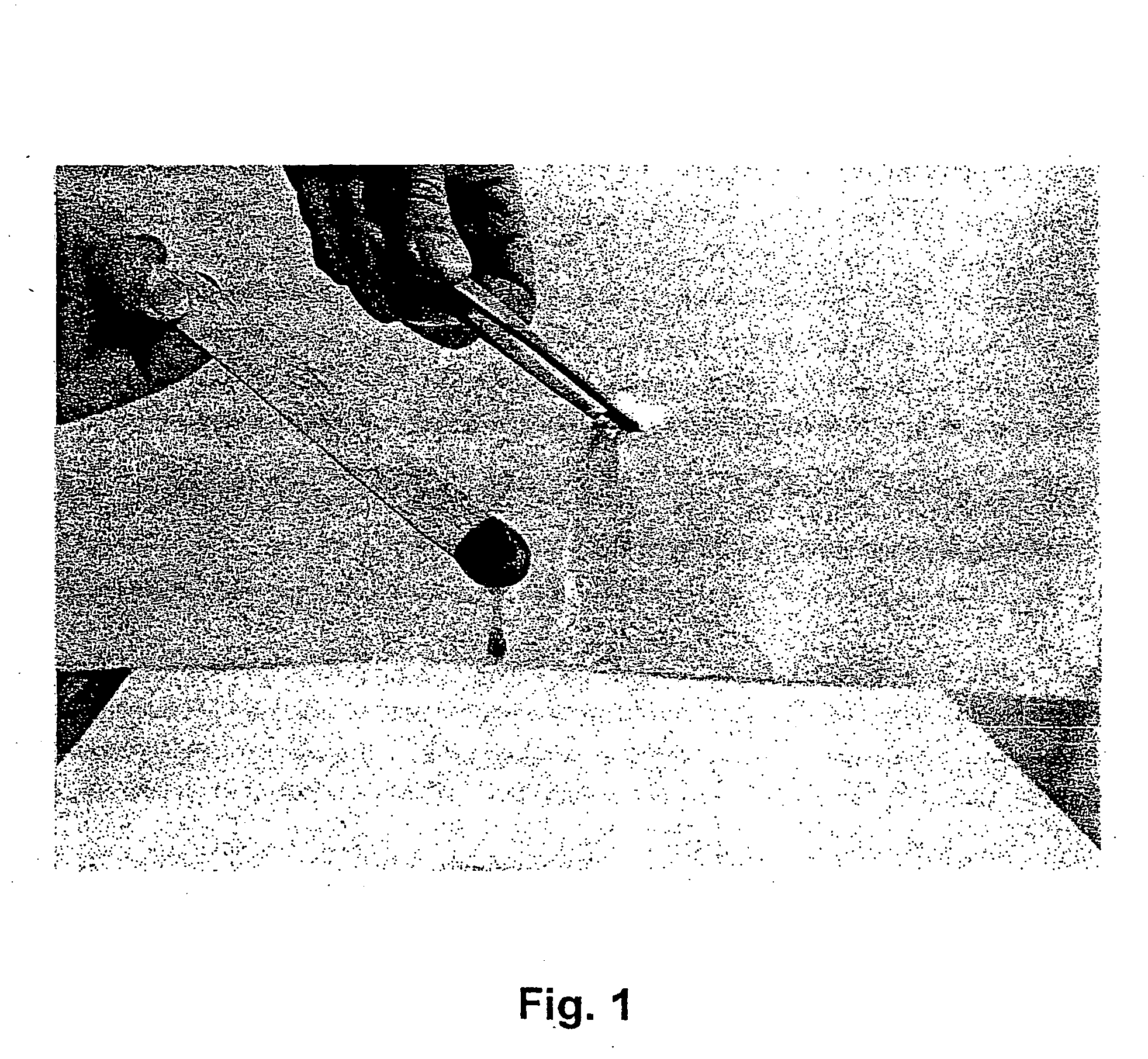Wound care device
a wound care and wound technology, applied in the field of wound care devices, can solve the problems of limited absorption and/or lack of cohesion, and difficulty in removing fibre products from wounds,
- Summary
- Abstract
- Description
- Claims
- Application Information
AI Technical Summary
Benefits of technology
Problems solved by technology
Method used
Image
Examples
first embodiment
In the invention the acid treatment and the heat treatment is a combined process, according to which the chitosan fibres may be treated with acid under simultaneous heat treatment.
In the first embodiment of the invention the temperature of which the acid treatment is processed is preferably from 50 to 200 more preferred from 60 to 180° C. and most preferred from 64 to 160° C.
In a second embodiment of the invention, the acid is a mixture of at least two acids.
The first acid may be a hydroxy organic acid, which is soluble in the used solvent, preferably glucolic or a hydroxy propionic / butanic acid. Especially preferred is lactic acid.
When chitosan molecules are treated with acids of the first type at a temperature below 85° C., very weak and few crosslinking point between the chitosan molecules are created. This will turn the chitosan from an insoluble form into almost soluble form with very limited cohesion. If the material is sterilised by radiation this will result in an eve...
fifth embodiment
In the invention the chitosan fibres are first treated with acid, and subsequently treated with a base. In this way, the fibres are first converted to water soluble fibres by the acid treatment, and are then turned into water swellable but substantially water insoluble absorbent fibres by the alkaline treatment.
In a sixth embodiment of the invention, the chitosan fibres are treated with heat both during the acid treatment and then again subsequently.
seventh embodiment
In the invention the amount of acid used is insufficient for a complete conversion of the chitosan, resulting in fibres which are water swellable, water gelling but substantially water insoluble. The resulting chitosan fibres will thus comprise non-modified parts where the absorption is lower but the cohesion is higher than in the parts where the chitosan is fully converted. This combination may reduce the risk of gel-blocking in the fibrous material, as well as the higher cohesion may ease the further processing and handling of the fibres.
By treated in such a limited way is meant, that the chitosan fibres may only be partly converted into a acid salt, in such a manner that the molecules will expand when they contacted with an aqueous liquid, but still maintain their structure in such a degree, that removal in one piece from a wound is possible. The process of carrying out this embodiment of the invention is preferably by reducing amount of acid in the acid treatment. By doing this...
PUM
| Property | Measurement | Unit |
|---|---|---|
| viscosity | aaaaa | aaaaa |
| viscosity | aaaaa | aaaaa |
| viscosity | aaaaa | aaaaa |
Abstract
Description
Claims
Application Information
 Login to View More
Login to View More - R&D
- Intellectual Property
- Life Sciences
- Materials
- Tech Scout
- Unparalleled Data Quality
- Higher Quality Content
- 60% Fewer Hallucinations
Browse by: Latest US Patents, China's latest patents, Technical Efficacy Thesaurus, Application Domain, Technology Topic, Popular Technical Reports.
© 2025 PatSnap. All rights reserved.Legal|Privacy policy|Modern Slavery Act Transparency Statement|Sitemap|About US| Contact US: help@patsnap.com

